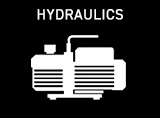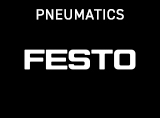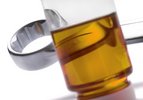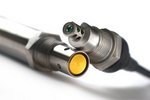We provide information and advice on Parker Kittiwake products and services, known for oil condition analysis, particle counting, condition monitoring and exhaust gas measurements.
Vogel has been a certified distribution partner for the product and service portfolio under the Parker brand for many years. We carry out oil analyses, liquid condition monitoring and condition monitoring of various fluids with modern sensor systems and measurement technology.
You can find further information on the measuring technology segment here ...
Kittiwake
Kittiwake is a specialist in monitoring systems for hydraulic systems and machinery, with its main focus on sensors and analysis tools for hydraulic oils, lubricants and fuels. Kittiwake distributes fixed on-line sensors for continuous monitoring, as well as portable test equipment for service teams and on-site measurements. The company is now part of the Parker Hannifin Group.
On-line sensors
Kittiwake develops and distributes sensors for continuous monitoring of hydraulic systems. Oil condition sensors record the continuous degradation of the oil condition, as well as any sudden changes that may be caused by damage within the system, and permit a timely response. The standard sensors are sensitive to contaminants such as water, glycol, insoluble matter, oxidation and nitration.
Particle counting sensors detect the size and number of ferrous and non-ferrous particles in the hydraulic fluid, thereby providing information about wear and material fatigue.
Particularly sensitive particle counters can detect particles with a size of less than 1 micron. These sensors are especially suitable for detecting abrasive grit and are used in equipment such as marine engines and large diesel generator sets.
Specialised moisture sensors detect moisture even below the solubility limit. They are used in hydraulic or light oil systems that have a moisture tolerance of less than 1000 ppm. The WaterSCAN model permits online measurements of water and soot contaminants with high accuracy. A rugged, waterproof housing and temperature-stable circuitry ensures that the sensor can provide accurate, repeatable, reliable and real time data in the harshest of conditions.
On-site measuring equipment
Kittiwake supplies portable equipment for on-site oil analysis. The DIGI tests series included a range of measurement methods to determine oil contamination by water, insoluble matter and other contaminants, as well as test methods to determine viscosity.
Inexpensive stand-alone kits to manually determine oil contamination are provided under the name ECON. The range includes equipment to determine salt content, acid value, viscosity and detection of undissolved substances in hydraulic oil. Most test procedures of the ECON range are simple indicators or comparative tests to detect whether limit values may have been exceeded.
On-site laboratory tests
Kittiwake develops and distributes a range of highly sensitive on-site test equipment for on-site laboratory-quality testing.
ANALEX is a series of robust laboratory instruments for field use. ANALEX fdMplus includes a highly precise but robust magnetometer and allows rapid particle counting of metal contaminants in oil and grease samples. The ANALEX pqF model detects iron abrasion in oil and grease samples, indicates the PQ index and produces test results that are comparable to conventional laboratory instruments. ANALEX rpd provides a quick and easy method to determine particle sizes.
The OTC electronic measurement system includes a range of measurement methods for comprehensive on-site oil analysis. This highly precise yet robust system is used, for instance, on military vessels and remote power stations. It enables even non-technical personnel to determine the water content, viscosity and degree of oil contamination.
The FTIR³ Oil Analyser permits tests to be carried out according to the ASTM-D74181 standard. The system is suitable for condition monitoring of lubricants with a main focus on sulphates, phosphates, oxidation and nitration. In addition, parameters such as soot, water, antioxidant content and glycol contamination can be determined.










